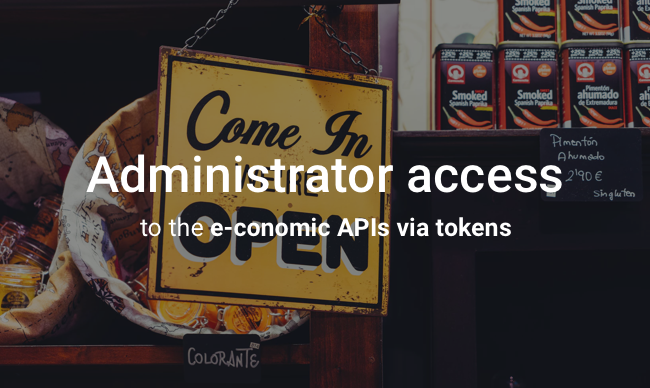
Token auth for all
We are very happy to announce that we now fully support token authentication for all license types.
Both end-users and administrators are now able to access our APIs via token authentication.
This opens the door for administrators to take full advantage of REST and the ease of implementation related to this API, along with the ability for all to tap into the full range of solutions available from our many Partners.
Administrator?
Administrator agreements aka the administrator module is a separate e-conomic login that gives access to a list of e-conomic agreements where you have been assigned as an administrator. These are used by accounting offices, accountants, bookkeepers or companies whose main focus is an accounting.
Read the full presentation (in Danish).
Switching from stored credentials to tokens
In July 2018 we deprecated the last credentials based authentication method in SOAP. This means that if you haven’t yet you should follow our Token connect guide to get back onto the APIs.
Quick info:
Tokens need only be generated once and do not have a TTL.
Tokens may be revoked inside e-conomic by the user by going to All Settings -> Extensions -> Apps.
Generating agreement grant tokens as administrator
In this first release of tokens for administrators, it is required that the administrator first establishes the administration context before following the RequestURL.
What this means is:
- Login to your administrator module.
- Switch to administering the agreement you want to add the app to.
- Follow the RequestURL in the same browser.
- Add app.
We would love to know more about your admin workflow and how you’d like to see the app flow for administrators improved so please don’t hesitate to get in touch with us on api@e-conomic.com.